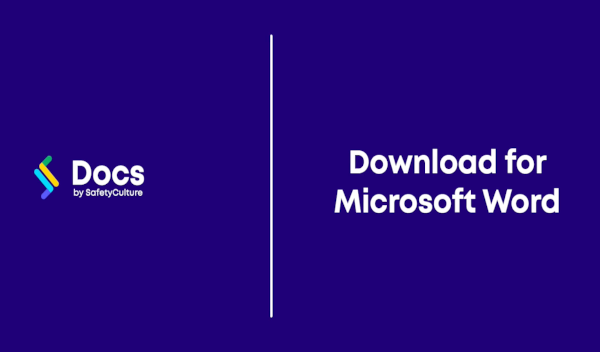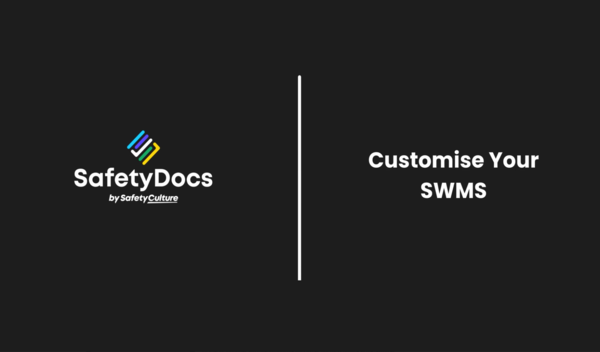Concrete Piling Safe Work Method Statement
- Instant Document Delivery via Email.
- Add to your existing management system.
- Can assist in ensuring workers are adequately trained.
- Customisation instructions provided.
- Microsoft Word Format (Fully editable).
- Only pay once (no subscriptions required).
Concrete Piling Safe Work Method Statement
This Concrete Piling Safe Work Method Statement (SWMS) outlines the hazards and controls associated with drilling and concrete piling operations using an excavator. It provides guidelines for the safety of workers and compliance with current regulations.
Job Steps Covered in Concrete Piling SWMS
- Planning: Initiates the process with risk assessments and preparation.
- Arrival On-site & Assess On-site Conditions: Evaluates site hazards and readiness.
- Check Weather Conditions & Prepare: Considers weather impacts on safety and operations.
- Work Area Set-up: Guides on establishing a secure and efficient work zone.
- Environment: Focuses on environmental protection measures.
- Housekeeping: Stresses the importance of cleanliness and order at the worksite.
- Manual Tasks: Advises on reducing risks during manual handling.
- Delivery & Removal of Plant: Safe control measures for equipment handling.
- Materials Delivery: Details safe material delivery and handling.
- Hazardous Substance/Chemical Use: Outlines safe chemical handling.
- Connecting Attachments (augers): Provides safety guidelines for equipment attachment.
- Machine Operation (drilling, piling): Describes the safe operation of drilling and piling machinery.
- Steel Reinforcement: Safe handling and placement of steel reinforcements.
- Concrete Pour: Guides on safe concrete pouring practices.
- Setting Starter Bars/Column Bolts: Details accurate and safe setting of structural components.
- On Completion: Concludes operations with safety checks and cleanup.
- Emergency Response: Prepares workers for efficient emergency handling.
Each purchase of our SWMS comes with a complimentary copy of the Legislation & Codes of Practice Reference List, valued at $19.95. This valuable resource provides an up-to-date overview of relevant laws and standards, further supporting your compliance efforts.
Key Features of the SWMS
- Comprehensive Planning and Assessment: Thorough preparation and site assessment for safety.
- Mobile Plant Movement Safety: Details safety measures for mobile plant operations.
- Rigorous Standards Compliance: Guarantees adherence to current regulations and standards.
- User-Friendly Design: Offers easy-to-follow guidelines for effective implementation.
Who is it Suitable For?
- Construction Companies: For safe concrete piling operations.
- Civil Engineering Firms: Assists in upholding safety during complex projects.
- Site Supervisors and Project Managers: Provides a detailed safety oversight tool.
- Piling Contractors: Aids in regulatory compliance and safe work practices.
Ensure your team is equipped with the knowledge and tools to perform concrete piling operations safely. Purchase the Concrete Piling Safe Work Method Statement today and uphold the highest safety standards on your projects.
- Instant Document Delivery via Email.
- Add to your existing management system.
- Can assist in ensuring workers are adequately trained.
- Customisation instructions provided.
- Microsoft Word Format (Fully editable).
- Only pay once (no subscriptions required).
Concrete Piling Safe Work Method Statement
This Concrete Piling Safe Work Method Statement (SWMS) outlines the hazards and controls associated with drilling and concrete piling operations using an excavator. It provides guidelines for the safety of workers and compliance with current regulations.
Job Steps Covered in Concrete Piling SWMS
- Planning: Initiates the process with risk assessments and preparation.
- Arrival On-site & Assess On-site Conditions: Evaluates site hazards and readiness.
- Check Weather Conditions & Prepare: Considers weather impacts on safety and operations.
- Work Area Set-up: Guides on establishing a secure and efficient work zone.
- Environment: Focuses on environmental protection measures.
- Housekeeping: Stresses the importance of cleanliness and order at the worksite.
- Manual Tasks: Advises on reducing risks during manual handling.
- Delivery & Removal of Plant: Safe control measures for equipment handling.
- Materials Delivery: Details safe material delivery and handling.
- Hazardous Substance/Chemical Use: Outlines safe chemical handling.
- Connecting Attachments (augers): Provides safety guidelines for equipment attachment.
- Machine Operation (drilling, piling): Describes the safe operation of drilling and piling machinery.
- Steel Reinforcement: Safe handling and placement of steel reinforcements.
- Concrete Pour: Guides on safe concrete pouring practices.
- Setting Starter Bars/Column Bolts: Details accurate and safe setting of structural components.
- On Completion: Concludes operations with safety checks and cleanup.
- Emergency Response: Prepares workers for efficient emergency handling.
Each purchase of our SWMS comes with a complimentary copy of the Legislation & Codes of Practice Reference List, valued at $19.95. This valuable resource provides an up-to-date overview of relevant laws and standards, further supporting your compliance efforts.
Key Features of the SWMS
- Comprehensive Planning and Assessment: Thorough preparation and site assessment for safety.
- Mobile Plant Movement Safety: Details safety measures for mobile plant operations.
- Rigorous Standards Compliance: Guarantees adherence to current regulations and standards.
- User-Friendly Design: Offers easy-to-follow guidelines for effective implementation.
Who is it Suitable For?
- Construction Companies: For safe concrete piling operations.
- Civil Engineering Firms: Assists in upholding safety during complex projects.
- Site Supervisors and Project Managers: Provides a detailed safety oversight tool.
- Piling Contractors: Aids in regulatory compliance and safe work practices.
Ensure your team is equipped with the knowledge and tools to perform concrete piling operations safely. Purchase the Concrete Piling Safe Work Method Statement today and uphold the highest safety standards on your projects.


